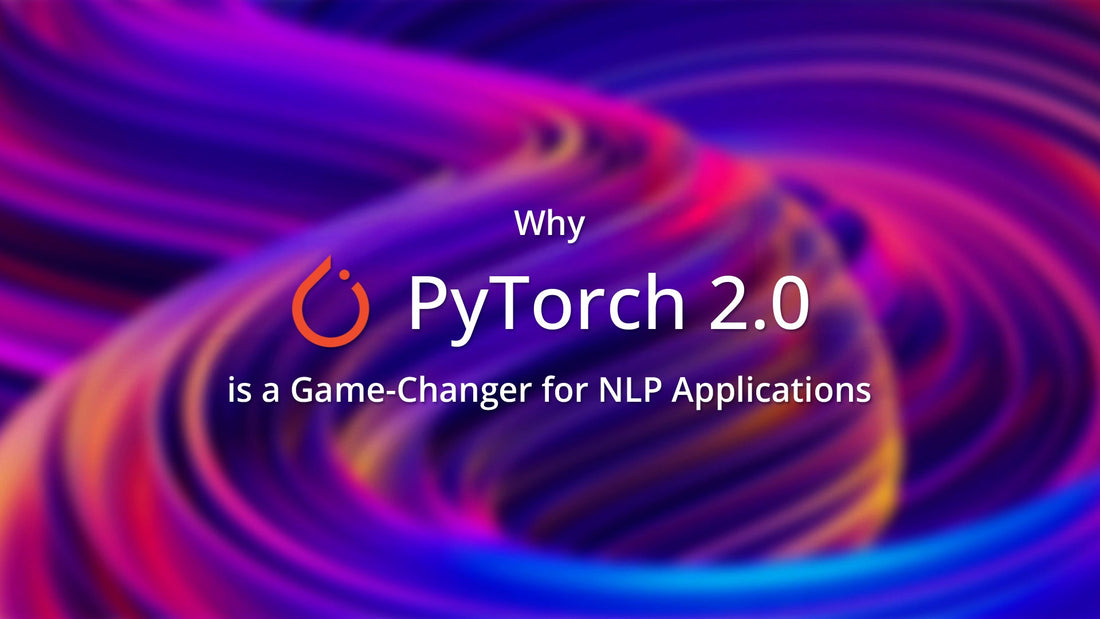
Why PyTorch 2.0 is a Game-Changer for NLP Applications
Natural Language Processing (NLP) has evolved rapidly over the years, with deep learning frameworks playing a crucial role in advancing the field. PyTorch, one of the most popular deep learning frameworks, has undergone a major transformation with the release of PyTorch 2.0. This update brings significant improvements that make NLP applications faster, more efficient, and easier to develop. Let’s explore why PyTorch 2.0 is a game-changer for NLP applications.
1. Faster Model Training with TorchCompile
PyTorch 2.0 introduces torch.compile, a powerful feature that optimizes model execution. Traditional PyTorch relied on eager execution, which, while flexible, wasn’t always the fastest. The new torch.compile feature speeds up model execution by compiling PyTorch code into optimized, lower-level representations, reducing overhead and improving performance.
For NLP applications, where large-scale training on massive text datasets is common, this improvement translates into faster model convergence and reduced hardware costs.
2. Improved Transformer Performance
Transformers are the backbone of modern NLP applications, powering models like BERT, GPT, and T5. PyTorch 2.0 includes optimizations tailored for transformer architectures, such as better memory management and more efficient attention computations.
With these enhancements, NLP models can process larger text sequences with reduced memory consumption, making them more scalable and cost-effective for deployment.
3. Better Support for Dynamic Computation Graphs
One of PyTorch’s biggest advantages has always been its dynamic computation graphs, allowing researchers to experiment with novel architectures flexibly. PyTorch 2.0 further enhances this feature by reducing execution overhead, making dynamic graph-based models even faster.
This is particularly beneficial for NLP tasks that involve varying input lengths, such as text summarization and dialogue generation, where the model structure can change dynamically.
4. Enhanced Distributed Training
Training NLP models on large datasets often requires distributed computing across multiple GPUs or even multiple machines. PyTorch 2.0 improves distributed training with better scalability and efficiency.
New features like enhanced tensor parallelism and pipeline parallelism enable more efficient utilization of hardware resources, ensuring that large NLP models can be trained faster without excessive costs.
5. Easier Model Deployment with TorchDynamo
Deploying NLP models in production has traditionally been challenging due to performance bottlenecks and compatibility issues. PyTorch 2.0 introduces TorchDynamo, a new compiler-based approach that automatically optimizes models for deployment without requiring developers to rewrite their code.
This makes it easier to deploy NLP models across various platforms, from cloud-based inference to edge devices.
6. Improved Support for Quantization
Quantization reduces model size and speeds up inference by using lower-precision calculations. PyTorch 2.0 enhances support for dynamic and static quantization techniques, making it easier to deploy NLP models on resource-constrained environments such as mobile devices and embedded systems.
Conclusion
PyTorch 2.0 is a significant leap forward for NLP applications, offering major improvements in speed, efficiency, and ease of deployment. Whether you’re training large transformer models, building real-time NLP applications, or deploying models at scale, PyTorch 2.0 provides the tools necessary to achieve state-of-the-art performance with minimal overhead.
As NLP continues to evolve, leveraging the latest advancements in PyTorch 2.0 will be essential for staying at the forefront of innovation in AI-driven language technologies.
